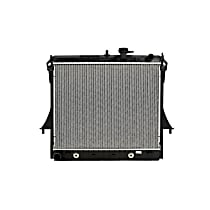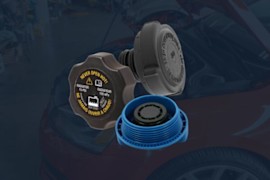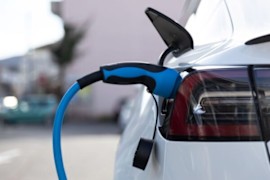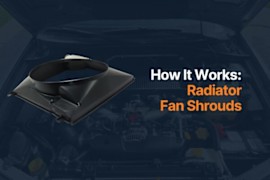{
"lazyNodes": false,
"abFitnotesFlag": false,
"abCrawlReviews": false,
"productOptionsCookie": false,
"orderDelayFlag": false,
"skipSessionCookie": false,
"covidMessage": false,
"fullTitleCookie": false,
"nrLoggerCookie": false,
"checkoutReviewCookie": false,
"productOptionSeqCookie": false,
"maintenanceFlag": false,
"bufferETACookie": false,
"multiShippingDiscountFlag": false,
"newFitmentFlag": false,
"surveyOptInFlag": false,
"crossSellFlag": false,
"skuMappingFlag": false,
"paySplitCookie": false,
"callDisableFlag": false,
"zipPaymentFlag": "u",
"hassleFreeReturn": false,
"lifetimeReplacement": false,
"cpn_off": false
}Hummer H3 Radiators
Shop Catalog
![]() WARNING: This product can expose you to chemical which is known to the State of California to cause cancer and birth defects or other reproductive harm. For more information go to www.P65Warnings.ca.gov.
WARNING: This product can expose you to chemical which is known to the State of California to cause cancer and birth defects or other reproductive harm. For more information go to www.P65Warnings.ca.gov.
![]() WARNING: This product can expose you to chemical which is known to the State of California to cause cancer and birth defects or other reproductive harm. For more information go to www.P65Warnings.ca.gov.
WARNING: This product can expose you to chemical which is known to the State of California to cause cancer and birth defects or other reproductive harm. For more information go to www.P65Warnings.ca.gov.
![]() WARNING: This product can expose you to chemical which is known to the State of California to cause cancer and birth defects or other reproductive harm. For more information go to www.P65Warnings.ca.gov.
WARNING: This product can expose you to chemical which is known to the State of California to cause cancer and birth defects or other reproductive harm. For more information go to www.P65Warnings.ca.gov.
![]() WARNING: This product can expose you to chemical which is known to the State of California to cause cancer and birth defects or other reproductive harm. For more information go to www.P65Warnings.ca.gov.
WARNING: This product can expose you to chemical which is known to the State of California to cause cancer and birth defects or other reproductive harm. For more information go to www.P65Warnings.ca.gov.
Top Rated Products
Popular Products
Customer Guides
Simple Tips that Will Add More Years to the Life of Your Hummer H3 Radiator
Being a Hummer doesn't only mean becoming a part of the industry's famous family of SUVs, but it also implies having the capability to live up to the well-known off-road reputation the brand has long been known for. One way you can help maintain your Hummer H3's off-roading power is to take good care of its radiator, which plays a major role in making sure that the engine continues to work at the right operating temperature. If you want your Hummer H3 radiator to last long, follow these four simple tips:
- Check the coolant level on a regular basis and top it up when necessary.
The radiator should always be filled with coolant, unless there's a leak in the system. You have to consult your owner's manual as it will tell you what the ideal radiator fluid level is in relation to the fill line. You can check the fluid level by locating the radiator fluid overflow reservoir, which is usually mounted at the edge of the engine compartment. The container usually has markings indicating whether the fluid level is low or high.
- Make sure you use the right mixture of coolant/antifreeze and water.
If you found out during your inspection that your radiator needs coolant, then make sure to top it up with the right coolant and water proportion. Check your manual for the specific coolant-to-water ratio that's right for the H3's cooling system. Improper ratio of these elements can lead to water pump damage while the right mixture raises the water's boiling point and helps prevent buildup of rust.
- Flush your radiator periodically.
Periodic flushing of the radiator is a standard part of regular automotive maintenance. This involves completely draining and refilling the cooling system. So if you don't have much knowledge on how to do it right, you'd better let a qualified automotive specialist do it for you. The interval of radiator flushing depends on the type of vehicle, its age and condition, as well as the type of fluid being used in the cooling system. Again, you have to consult your manual for proper flushing frequency and interval. In general, you need to perform flushing as soon as your antifreeze turns cloudy or if your Hummer seems to be running hotter than usual.
With its remarkable on- and off-road capabilities, your Hummer H3 deserves a well-functioning cooling system that will keep its engine working in proper operating temperature. And when it comes to the cooling system, the radiator is one of the first components you have to pay attention to because it is where the engine coolant is being cooled to be once again capable of absorbing engine heat. Because of its major role in engine cooling, it is one of the first components that are diagnosed and inspected whenever engine temperature rises at an unusual rate. Here are some of the common problems associated with your Hummer H3 radiator, and how you can troubleshoot them:
Radiator leak
If you noticed that you now need to top up your coolant for a couple of times within just a year or when there’s an acrid smell even when the engine is at the right temperature, then there might be a leak somewhere in your cooling system. The most common source of leak isn’t actually the radiator but the hoses connected to it. The radiator hoses, which connect the radiator and the engine, have to deal with hot coolant every time you use the vehicle. Because of their task, they are prone to wearing out and failure over time.
You can troubleshoot leak in the radiator and its hoses by visually inspecting them and checking for split in the hoses as well as any irregularity around the hose clamps. You can also listen for a hissing sound. Leaks in the radiator will either cause the pressurized fluids to spew out or create a hissing sound.
Engine overheating
There are lots of factors that can cause engine overheating. Among them are low or empty coolant level, dirty radiator, leaky radiator hoses, malfunctioning cooling fan, and other problems. However, it’s always a good idea to start your troubleshooting with your coolant reservoir and your radiator. Once the vehicle overheats, pull over in a safe place beside the road and pop the hood open to allow proper ventilation in the engine compartment. Allow the engine to cool down before checking the coolant level and other relative components.
If there is still sufficient amount of coolant, check your radiator and its hoses for leaks. Also look for possible obstructions in the passageway of the coolant, including the radiator fins. If there are obstructions in the radiator, the coolant flow will be restricted, so transfer of heat into the air is also affected. Carefully inspect the radiator fins for bent or other signs of blockage.













